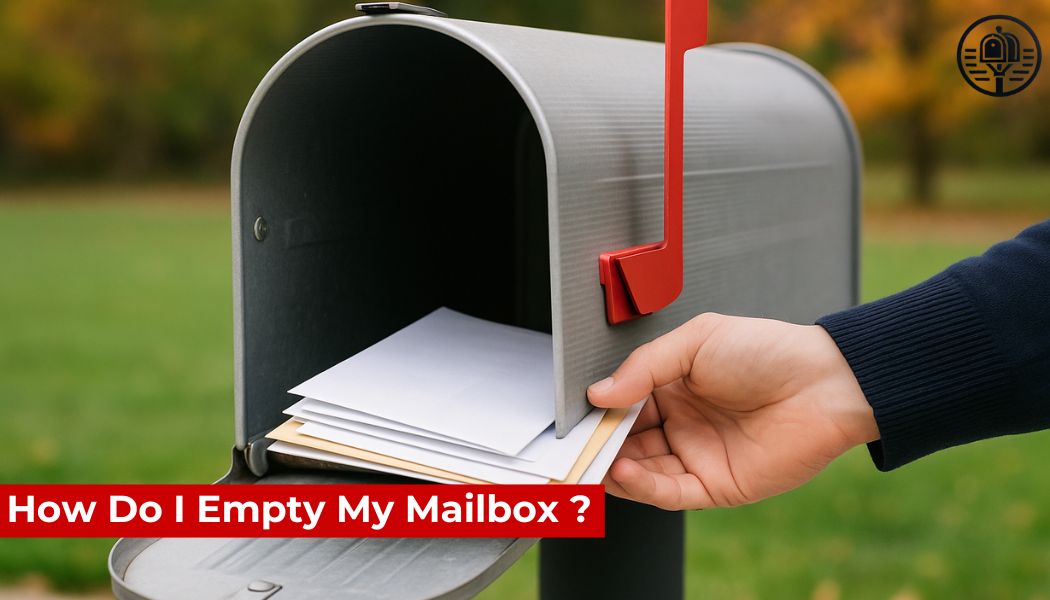Whether you're dealing with a physical mailbox or a cluttered email inbox, knowing how to empty your mailbox efficiently is essential for staying organized, reducing stress, and ensuring you never miss important messages or documents.
In this article, we’ll explore both meanings of a mailbox—physical and digital—and provide a clear guide on how to empty your mailbox, avoid common mistakes, and keep it clutter-free in the future.
Emptying a Physical Mailbox
A physical mailbox can easily overflow, especially if you're away on vacation, receive a lot of promotional material, or simply forget to check it. Here's a simple process to follow.
Step 1: Check Your Mailbox Daily
The easiest way to avoid a buildup is by making it a habit to check your mailbox every day. If you're expecting important items like bills, checks, or packages, this daily check ensures you don’t miss time-sensitive deliveries.
Step 2: Take Out All Contents
Open the mailbox and remove all mail and packages. If your mailbox has a backdoor or rear entry (common in wall-mounted or locking mailboxes), use the proper key or code.
For USPS-approved locking mailboxes, use your individual key to unlock and safely access your mail. Be sure not to force the lock, as damage to a mailbox is costly and may violate postal regulations.
Step 3: Sort Immediately
Once you’ve gathered your mail, sort it immediately:
-
Important documents (bills, government notices)
-
Personal letters
-
Junk mail and advertisements
-
Packages
Place each category in its proper spot at home or office to prevent pileups.
Step 4: Dispose of Junk Mail Responsibly
To empty your mailbox entirely and prevent future clutter, recycle or shred unwanted mail such as:
-
Flyers
-
Catalogs
-
Credit card offers
-
Expired coupons
You can also opt out of some promotional mail by visiting sites like DMAchoice.org.
Step 5: Check for Forgotten Items
Occasionally, smaller envelopes or folded letters can get stuck inside. Always give your mailbox a quick glance after emptying it to ensure nothing is left behind.
How to Empty a USPS Mailbox (for Senders)
If you’re referring to emptying your mailbox as a sender, such as a USPS collection box, only authorized postal workers can do that. These boxes are collected daily by the USPS. If you believe a mailbox is full or mail hasn’t been collected, call 1-800-ASK-USPS or report the issue online.
Emptying an Email Mailbox
The term “mailbox” today often refers to an email inbox, which can easily become overwhelming with unread messages, newsletters, and spam. Here's how to clean it effectively.
Step 1: Delete Spam and Trash
Start by emptying your spam and trash folders. These usually hold hundreds of unnecessary messages and can be deleted in one click in most providers like Gmail, Outlook, or Yahoo.
Step 2: Sort by Sender or Subject
Use filters or sorting features to group messages by:
-
Sender (e.g., newsletters, companies)
-
Subject line
-
Date received
This lets you bulk delete or archive similar messages quickly.
Step 3: Unsubscribe from Unwanted Emails
To prevent future inbox clutter, click the "unsubscribe" link at the bottom of promotional emails. Alternatively, use tools like Unroll.Me to manage subscriptions efficiently.
Step 4: Archive Important Messages
If you don’t want to delete certain messages but don’t need them in your inbox, use the "archive" function. It keeps your inbox clean while preserving your history.
Step 5: Set Inbox Rules
Many email providers allow you to set rules or filters to:
-
Automatically move newsletters to a folder
-
Mark bills or important senders as “priority”
-
Flag or star urgent messages
This helps you maintain a clean mailbox long-term.
Step 6: Aim for Inbox Zero
“Inbox Zero” is the practice of keeping your inbox empty or nearly empty. You can reach this goal by:
-
Responding to or archiving messages immediately
-
Using folders or labels
-
Scheduling time daily to check and clean your inbox
Why It’s Important to Empty Your Mailbox
Emptying your mailbox regularly—physical or digital—has multiple benefits:
-
Reduces the chance of missing important mail
-
Prevents identity theft (especially for paper mail)
-
Improves organization and productivity
-
Keeps your mind clear and reduces digital fatigue
-
Ensures faster response times to critical communications
What to Do if Your Mailbox is Overfull
If your mailbox is overflowing, here’s what you can do:
-
For physical mailboxes: Consider upgrading to a larger or locking model. You can also request a hold mail service from USPS during extended absences.
-
For email: Use cleanup tools offered by your provider, like Gmail’s “storage management” feature or Outlook’s sweep function.
Preventive Tips to Keep Your Mailbox Clean
-
Check and clean daily
-
Unsubscribe from unnecessary mailing lists
-
Go paperless when possible (e.g., digital bills)
-
Use folders and rules for digital sorting
-
Recycle or shred unwanted paper mail
FAQ
How often should I empty my mailbox?
You should empty your physical mailbox daily to avoid missed deliveries or stolen mail. For email, check and clean your inbox at least once a day.
Can the USPS stop delivering mail if my mailbox is full?
Yes. If your mailbox is consistently full, USPS may hold your mail at the local post office and leave a notice. It's important to empty it regularly.
How do I empty my email mailbox all at once?
Most email providers allow you to select all messages and delete them in bulk. Use filters to delete by sender or date to clean up faster.
What happens if I don’t empty my mailbox?
For physical mail, it may be held or returned. For email, your inbox can reach storage limits, preventing new messages from being received.
Is there a way to prevent junk mail from arriving?
Yes. You can opt out of promotional mailings through the DMAchoice.org website or by contacting advertisers directly.
By following these simple yet effective strategies, you can confidently keep your mailbox—physical or digital—empty, organized, and functional every day.

